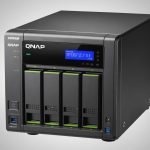Unlocking the Power of Apache Airflow: Your Ultimate Handbook for Streamlining Data Workflow Scheduling and Orchestration to Apache Airflow
Apache Airflow is an open-source platform that has revolutionized the way data teams manage and orchestrate their workflows. Originally developed by Airbnb, Airflow has become a staple in the data engineering community, used by giants like Netflix, Dropbox, and many more. In this handbook, we will delve into the world of Apache Airflow, exploring its features, use cases, and best practices to help you streamline your data workflow scheduling and orchestration.
Understanding the Basics of Airflow
Before diving into the advanced features, it’s essential to understand the core components of Apache Airflow.
Also to read : Discover the best ssl certificate checker online today
What is a DAG?
A Directed Acyclic Graph (DAG) is the fundamental unit of workflow in Airflow. It represents a collection of tasks that need to be executed in a specific order. Each task in the DAG is defined as an operator, and these operators can be as simple as a Bash command or as complex as a machine learning model deployment.
Tasks and Operators
Tasks are the building blocks of a DAG. They can be anything from a simple BashOperator that runs a shell command to a PythonOperator that executes a Python function. Operators are reusable and can be shared across different DAGs, making it easy to manage complex workflows.
Additional reading : Comprehensive blueprint for establishing a site-to-site vpn link between your on-premises network and aws vpc
Scheduling and Triggers
Airflow allows you to schedule your DAGs to run at specific intervals or in response to certain events. This scheduling can be as simple as running a DAG daily or as complex as triggering a DAG based on the completion of another DAG.
Integrating Airflow with External Systems
One of the powerful features of Airflow is its ability to integrate with various external systems, enhancing its capabilities in data orchestration.
Integration with Azure Entra ID for OAuth Authentication
Integrating Airflow with Azure Entra ID provides a secure and centralized way to manage user access. This involves configuring OAuth settings in Airflow, including the jwks_uri to retrieve Azure’s public keys for token verification. Here’s how it works:
- AUTHROLESMAPPING: This parameter connects Azure roles to Airflow roles, enabling automated role assignments based on group memberships in Azure. This simplifies access control by assigning appropriate permissions to users logging in via Azure Entra ID[1].
- jwks_uri: This defines the URI where Azure’s public keys can be retrieved for JWT token verification, ensuring the authenticity of the tokens and preventing unauthorized access[1].
Example: Automating Role Assignments
For instance, if a user belongs to the airflow_nonprod_admin group in Azure, they can be mapped to the Admin role in Airflow, granting them administrative access. This approach eliminates the need for additional role configurations in Airflow, making it a scalable solution for organizations.
Best Practices for Workflow Management
Effective workflow management is crucial for leveraging the full potential of Apache Airflow. Here are some best practices to keep in mind:
Use Meaningful DAG and Task Names
Using descriptive names for your DAGs and tasks helps in better understanding and managing your workflows. For example, instead of dag_1, use daily_data_pipeline.
Monitor and Log Your Workflows
Airflow provides robust logging and monitoring capabilities. Ensure that you configure these features to track the execution of your DAGs and tasks. This helps in debugging and optimizing your workflows.
Test Your Workflows Thoroughly
Before deploying your DAGs to production, test them thoroughly in a development environment. This includes testing each task individually and the entire DAG as a whole.
Use Cases for Apache Airflow
Apache Airflow is versatile and can be applied to a wide range of use cases.
ETL Pipelines
Airflow is commonly used for Extract, Transform, Load (ETL) pipelines. It can manage the extraction of data from various sources, transformation using scripts or tools like Apache Spark, and loading into data warehouses like Google BigQuery or Snowflake.
Machine Learning Pipelines
Airflow can orchestrate machine learning workflows, from data preprocessing to model deployment. It integrates well with tools like MLflow and TensorFlow, making it a favorite among data scientists.
Real-Time Data Processing
With the ability to trigger DAGs in real-time, Airflow can be used for real-time data processing. For example, it can be used to process streaming data from sources like Apache Kafka or AWS Kinesis.
Comparison with Other Data Orchestration Tools
Here’s a comparison of Apache Airflow with other popular data orchestration tools:
| Tool | Key Features | Use Cases |
|---|---|---|
| Apache Airflow | Open-source, DAG-based, extensive community support | ETL pipelines, machine learning workflows, real-time data processing |
| Azure Data Factory | Cloud-based, integration with Azure services, supports big data processing | Data integration across Azure services, big data processing |
| Google Cloud Dataflow | Part of Google Cloud, supports batch and streaming data processing | Data processing in Google Cloud ecosystem, big data and real-time data |
| AWS Data Pipeline | Integrates with AWS services, flexible and scalable | Data movement and processing within AWS ecosystem |
| Marjory | Low-code, cloud-native, real-time monitoring | Rapid ETL pipeline creation, data integration for small to medium enterprises |
Practical Insights and Actionable Advice
Here are some practical tips to get the most out of Apache Airflow:
Start Small
Begin with simple DAGs and gradually move to more complex workflows. This helps in understanding the nuances of Airflow and avoids overwhelming your team.
Use Airflow’s Built-in Features
Airflow comes with several built-in features like Sensor operators and Branch operators. Use these to simplify your workflows instead of writing custom code.
Leverage the Community
Airflow has a vibrant community. Participate in forums, attend meetups, and contribute to the project to stay updated with the latest best practices and features.
Advanced Features and Future Directions
Using Custom Security Classes
Airflow allows you to define custom security classes to enhance authentication and authorization. For example, the AzureCustomSecurity class can be used to integrate with Azure Entra ID, enabling customized user information retrieval from JWT tokens[1].
Real-Time Hub Integration
For real-time data processing, integrating Airflow with tools like the Real-Time Hub in Microsoft Fabric can enhance the ability to discover, ingest, and manage streaming data from various sources[2].
Apache Airflow is a powerful tool for data workflow scheduling and orchestration. With its flexible architecture, extensive community support, and ability to integrate with various external systems, it has become an indispensable asset for data teams. By following the best practices outlined in this handbook and leveraging its advanced features, you can unlock the full potential of Airflow to streamline your data workflows and drive your data engineering projects forward.
Final Thoughts
As you embark on your journey with Apache Airflow, remember that the key to success lies in understanding the basics, integrating it seamlessly with your existing systems, and continuously optimizing your workflows. Here’s a quote from the Airflow community that encapsulates the spirit of this tool:
“Airflow is not just a tool; it’s a way of thinking about workflows. It’s about breaking down complex processes into manageable tasks and orchestrating them in a way that makes sense for your organization.”
By adopting this mindset and leveraging the power of Apache Airflow, you can transform your data workflows, making them more efficient, scalable, and reliable. Happy orchestrating






